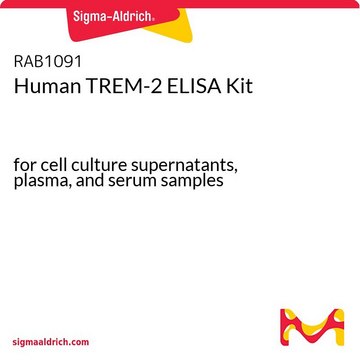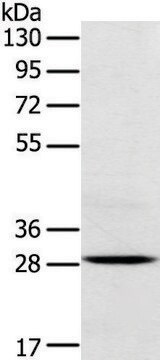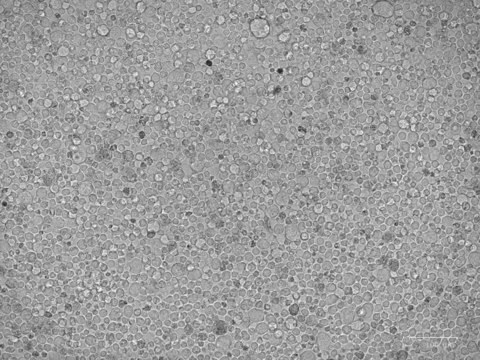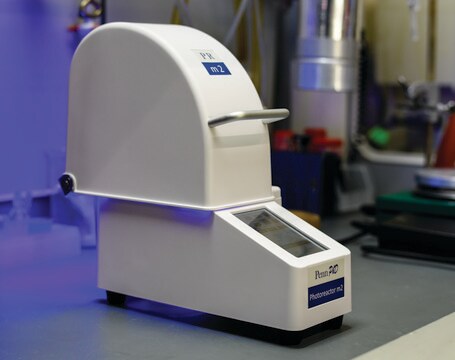Opis ogólny
Dokładamy wszelkich starań, aby dostarczać bardziej ekologiczne produkty alternatywne, które są zgodne z co najmniej jedną z 12 zasad zielonej chemii. To przeciwciało nie zawiera konserwantów, zostało wyprodukowane bez szkody dla zwierząt i jest wyjątkowo stabilne, aby umożliwić wysyłkę i przechowywanie w razie potrzeby, a tym samym jest zgodne z "Zapobieganiem powstawaniu odpadów", "Projektowaniem bezpieczniejszych chemikaliów" i "Projektowaniem pod kątem efektywności energetycznej".
Kliknij tutaj, aby uzyskać więcej informacji.
Przeciwciała 10889 stanowią całkowicie nową generację rekombinowanych przeciwciał monoklonalnych. Każde przeciwciało 10889 jest wytwarzane przy użyciu naszego zastrzeżonego systemu ekspresji rekombinowanej, oczyszczane do jednorodności i precyzyjnie dozowane w celu uzyskania solidnej i wysoce powtarzalnej konsystencji między partiami. Do użytku badaczy udostępniane są wyłącznie klony o najwyższej wydajności. Każde przeciwciało jest walidowane pod kątem wysokiej swoistości i powinowactwa w wielu zastosowaniach, w tym w najczęściej używanym zastosowaniu. Przeciwciała 10889 są niezawodnie dostępne i gotowe do wysyłki, gdy są potrzebne.
Specyficzność
Klon 1I11 to rekombinowane królicze przeciwciało monoklonalne 10889, które specyficznie wykrywa TREM2. Celuje w epitop w obrębie 14 aminokwasów od domeny zewnątrzkomórkowej w C-końcowej połowie.
Immunogen
Liniowy peptyd sprzężony z KLH odpowiadający 14 aminokwasom z domeny zewnątrzkomórkowej w C-końcowej połowie ludzkiego TREM2.
Zastosowanie
Testy kontroli jakości
Oceniane metodą Western Blotting w lizacie komórek RAW264.7.
Analiza Western Blotting: Rozcieńczenie 1:10 000 tego przeciwciała wykryło TREM-2 w lizacie komórek RAW264.7.
Testowane aplikacje
Analiza Western Blotting: Rozcieńczenie 1:1000 z reprezentatywnej partii wykryło TREM-2 w lizacie z komórek Jurkat, a rozcieńczenie 1:10 000 wykryło TREM-2 w lizacie z ludzkiej tkanki mózgowej.
Analiza cytometrii przepływowej: 1 µg z reprezentatywnej partii wykrył TREM-2 w milionie komórek Jurkat.
Test wiązania powinowactwa: Reprezentatywna partia tego przeciwciała wiązała peptyd TREM-2 z KD wynoszącym 2,0 x 10-8 w teście wiązania powinowactwa.
Analiza immunocytochemiczna: Rozcieńczenie 1:100 z reprezentatywnej partii wykryło TREM-2 w komórkach THP-1.
Uwaga: Rzeczywiste optymalne rozcieńczenia robocze muszą być określone przez użytkownika końcowego jako próbki, a warunki eksperymentalne mogą się różnić w zależności od użytkownika końcowego.
Opis wartości docelowych
Receptor wyzwalający wyrażany na komórkach mieloidalnych 2 (UniProt: Q9NZC2; znany również jako TREM-2, Triggering receptor expressed on monocytes 2) jest kodowany przez gen TREM2 (Gene ID: 54209) u człowieka. TREM-2 jest jednoprzebiegową glikoproteiną błonową typu I, która jest syntetyzowana z peptydem sygnałowym (aa 1-18), który jest następnie odcinany w celu wytworzenia dojrzałej formy zawierającej domenę zewnątrzkomórkową (aa 19-174), domenę transbłonową (aa 175-195) i domenę cytoplazmatyczną (aa 196-230). TREM-2 jest podobnym do Ig receptorem typu V wyrażanym przez populacje komórek szpikowych w różnych regionach ośrodkowego układu nerwowego. W OUN najsilniejszą ekspresję obserwuje się w zwojach podstawy mózgu, ciele modzelowatym, rdzeniu przedłużonym i rdzeniu kręgowym. Jego ekspresję odnotowano również na makrofagach i komórkach dendrytycznych, ale nie na granulocytach lub monocytach. TREM-2 wykazuje wysoką ekspresję w mikrogleju, gdzie wraz z białkiem adaptorowym DAP12 reguluje uwalnianie cytokin zapalnych i fagocytozę apoptotycznych neuronów. Odgrywa rolę w przewlekłych stanach zapalnych i może stymulować produkcję konstytutywnych, a nie zapalnych chemokin i cytokin. Jego krótki ogon cytoplazmatyczny nie zawiera żadnych motywów sygnałowych i opiera się na jego powiązaniu z motywem aktywacji opartym na tyrozynie immunoreceptora (ITAM-) zawierającym TYROBP w celu transdukcji sygnału. Tworzy kompleks sygnalizacyjny receptora z TYROBP i wyzwala aktywację odpowiedzi immunologicznej w makrofagach i komórkach dendrytycznych. Apolipoproteina E (ApoE) funkcjonuje jako ligand o wysokim powinowactwie do TREM-2. Wykazano, że wiązanie ApoE zwiększa fagocytozę apoptotycznych komórek Neuro2a przez pierwotne komórki mikrogleju. Znacznie zmniejszone wiązanie ApoE obserwuje się w przypadku mutanta TREM-2 R47H związanego z chorobą Alzheimera. Mutacje i polimorfizmy genu TREM2 zostały powiązane z kilkoma zaburzeniami neurologicznymi, w tym z chorobą Alzheimera (AD), otępieniem czołowo-skroniowym (FTD), chorobą Parkinsona (PD) i chorobą Nasu-Hakola. To rekombinowane przeciwciało monoklonalne 10889, generowane przez naszą zastrzeżoną technologię, oferuje znacznie zwiększoną swoistość, powinowactwo, powtarzalność i stabilność w porównaniu z konwencjonalnymi przeciwciałami monoklonalnymi. (Ref.: Zhao, Y., et al. (2018). Neuron. 97(5); 1023-1031; Ulland, TK., et al. (2017). Cell. 170(4); 649-663; Yeh, FL., et al. (2016). Neuron. 91(2); 328-340).
Postać fizyczna
Oczyszczone rekombinowane królicze przeciwciało monoklonalne IgG, liofilizowane w PBS z 5% trehalozą, o normalnym wyglądzie gruboziarnistej lub półprzezroczystej żywicy. Składniki PBS/trehaloza w preparacie ZooMAb mogą mieć wygląd półstały (żel przypominający kulki) po liofilizacji. Jest to zjawisko normalne. Należy postępować zgodnie z zalecaną procedurą rekonstytucji zawartą w arkuszu danych, aby rozpuścić półstały, przypominający kulki materiał o wyglądzie żelu. Otrzymany roztwór przeciwciała jest całkowicie stabilny i funkcjonalny, co potwierdzają pełne testy funkcjonalne. Nie zawiera biocydów ani konserwantów, takich jak azydek, ani żadnych produktów ubocznych pochodzenia zwierzęcego. Większe opakowania są dostarczane jako wielokrotności 25 µL.
Przechowywanie i stabilność
Zaleca się przechowywanie liofilizowanego produktu w temperaturze 2-8°C. Przed rekonstytucją fiolki należy krótko mikrowirować, aby odwirować materiał na dno fiolki. Każdą fiolkę należy odtworzyć, dodając 25 µl przefiltrowanej wody laboratoryjnej lub PBS. Odtworzone przeciwciała można przechowywać w temperaturze 2-8°C lub -20°C w celu długotrwałego przechowywania. Unikać wielokrotnego zamrażania.
Informacje prawne
ZooMAb is a registered trademark of Merck KGaA, Darmstadt, Germany
Oświadczenie o zrzeczeniu się odpowiedzialności
O ile nie określono inaczej w naszym katalogu lub innej dokumentacji firmy dołączonej do produktu(-ów), nasze produkty są przeznaczone wyłącznie do użytku badawczego i nie mogą być wykorzystywane do żadnych innych celów, w tym między innymi do nieautoryzowanych zastosowań komercyjnych, zastosowań diagnostycznych in vitro, zastosowań terapeutycznych ex vivo lub in vivo lub jakiegokolwiek rodzaju konsumpcji lub zastosowania u ludzi lub zwierząt.
Ta strona może zawierać tekst przetłumaczony maszynowo.










